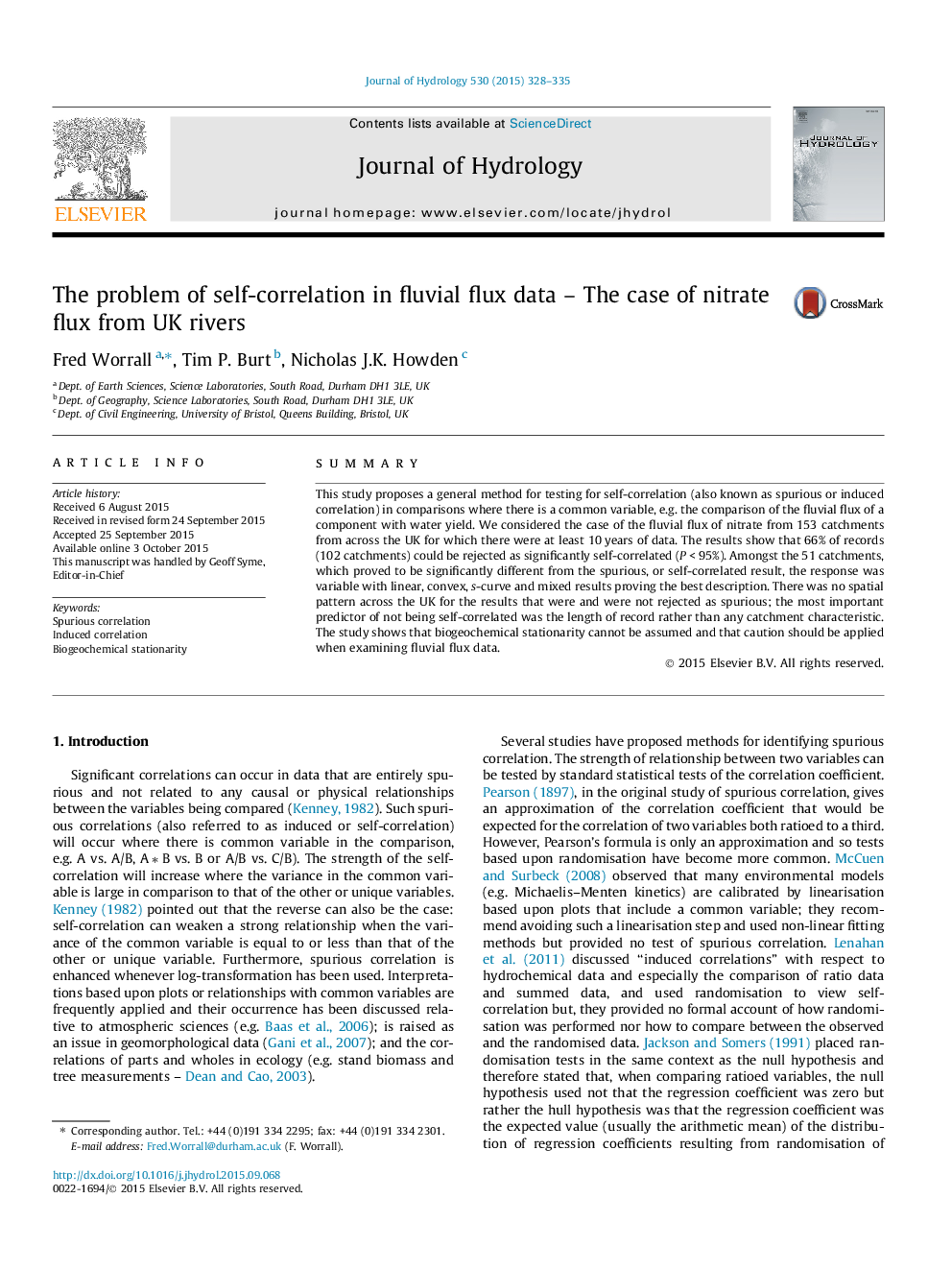| کد مقاله | کد نشریه | سال انتشار | مقاله انگلیسی | نسخه تمام متن |
|---|---|---|---|---|
| 6410209 | 1629921 | 2015 | 8 صفحه PDF | دانلود رایگان |
- Study proposes a general method for testing for self-correlation.
- 66% of records could be rejected as significantly self-correlated.
- Longer records were significantly less likely to be self-correlated.
- Non-spurious results were linear, convex, s-curve and combined responses.
- Biogeochemical stationarity cannot be assumed and must be tested for.
SummaryThis study proposes a general method for testing for self-correlation (also known as spurious or induced correlation) in comparisons where there is a common variable, e.g. the comparison of the fluvial flux of a component with water yield. We considered the case of the fluvial flux of nitrate from 153 catchments from across the UK for which there were at least 10Â years of data. The results show that 66% of records (102 catchments) could be rejected as significantly self-correlated (PÂ <Â 95%). Amongst the 51 catchments, which proved to be significantly different from the spurious, or self-correlated result, the response was variable with linear, convex, s-curve and mixed results proving the best description. There was no spatial pattern across the UK for the results that were and were not rejected as spurious; the most important predictor of not being self-correlated was the length of record rather than any catchment characteristic. The study shows that biogeochemical stationarity cannot be assumed and that caution should be applied when examining fluvial flux data.
Journal: Journal of Hydrology - Volume 530, November 2015, Pages 328-335
